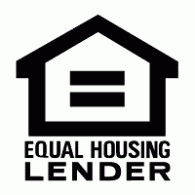Navigating the mortgage landscape without W-2s might seem daunting, but 3-month bank statement loans offer a viable solution. Ideal for self-employed individuals or those with unconventional income sources, these loans evaluate your financial health through bank statements rather than traditional income documents.
This flexibility extends to purchasing secondary homes or investment properties without the burden of private mortgage insurance (PMI) if you make a 20% down payment. Moreover, potential access to higher loan amounts sets this option apart from standard mortgages despite possible challenges like higher interest rates for bank statement loans and specific lender requirements, including credit scores and stable income histories.
Maximize Approval Chances with Bank Statements
Maximizing your approval chances for a mortgage without the traditional W-2 forms revolves around showcasing financial stability in alternative ways. Bank statements become pivotal here, especially if you’re self-employed or have varied income sources. They tell lenders about your money management skills and consistent earnings over time.
For those eyeing second homes or investment properties, bank statement loans are advantageous since they cater to such purchases, too. Without needing private mortgage insurance (PMI), given a 20% down payment, borrowers save significantly on costs that usually accompany other loan types. However, it could be smoother sailing; these loans demand higher down payments and might come with higher interest rates than conventional mortgages.
Their availability can be limited as only select lenders offer them, which requires diligent research on your part to locate these specialized financiers. Bank statement loan lenders consider several criteria before approving bank statement loans. A decent credit score, proof of steady income, ownership evidence, and business operation documentation are essential.
Anticipate putting at least 10%-20% down upfront based on the purchase price while demonstrating sufficient cash reserves beyond this initial investment to ensure coverage for future obligations under unforeseen scenarios. Despite flexibility with debt-to-income ratios slightly broader than standard mortgages’, staying below 43% remains preferred by most creditors assessing applicants’ ability to shoulder new debts efficiently alongside existing ones.
To qualify precisely involves presenting comprehensive documents aligning closely with lender stipulations. Ensuring robust preparation facilitates smoother application processes, leading toward securing desired borrowing amounts.
Alternative Documentation for Mortgage Loans
Alternative documentation, like 3-month bank statement loans, opens doors for many borrowers. Specifically designed for self-employed or low-income earners whose tax returns might show a partial picture of their earnings, these loans offer flexibility. With Griffin Funding’s program, you can secure a home loan by simply providing your recent bank statements as proof of income.
Instead of traditional W-2 forms or pay stubs, applicants submit 12 to 24 months’ worth of bank statements. Lenders then review these documents to gauge if you have consistent deposits that suggest financial stability and ability to repay the mortgage. This option caters well to business owners, freelancers, and anyone engaged in non-traditional employment structures who might need help with conventional loan requirements due to fluctuating incomes or hefty write-offs on taxes.
Bank statement loans differ from standard mortgages mainly in how they verify income. While traditional paths lean heavily on documented wages via tax filings and employer-generated records such as payslips, this alternative analyzes cash flow directly through personal or business banking activity.
The perks extend beyond just acquisition-refinancing opportunities exist, too, allowing holders potentially better rates or withdrawal of up to 80% of home equity for various needs like renovations or debt consolidation. Different formats are available depending on whether funds come from individual savings or company revenue.
There’s leniency around what counts towards qualified income, ensuring fair assessment of borrower capability. Given its tailored nature, comprehending if one qualifies and how much can realistically be borrowed requires guidance, bank statement calculators, and specialist advice.
Yet, this modern approach to financing proves invaluable, permitting access to a property market segment traditionally overlooked due to stringent criteria set by mainstream lending sources.
Showcase Financial Stability to Lenders
To highlight financial stability to lenders with a focus on 3-month bank statement loans, attention must pivot toward meticulous preparation of your banking records. Primarily, ensure all income sources reflect consistently across recent months. This straightforwardly signals steady earnings vital for loan repayment.
Closely monitor account activities, highlighting expenditure patterns and saving habits that underscore responsible money management as a crucial aspect in reassuring lenders of one’s capability to handle the proposed mortgage obligations efficiently.
Lenders seek evidence of fiscal prudence; hence, they avoid frequent overdraft incidents or substantial unexplained transactions potentially indicating erratic financial behavior or funds mismanagement- both significant red flags during loan evaluation processes.
More extensive deposits within this period must be thoroughly explained. Lenders assess such inflows meticulously to rule out undisclosed liabilities or irregular income sources possibly affecting loan servicing capacity.
Sourcing explains deposit origins while seasoning assures the tenure these amounts have been in your accounts, ideally spanning a minimum two-month interval, enhancing credibility through transparency about one’s finances. Remember not to introduce new debts after the loan application is closed. They could disrupt credit scores and debt-to-income ratios, negatively impacting final approval.
Navigating Loan Approval Without Traditional Income Proof
Navigating loan approval without traditional income proof, such as W-2s or tax returns, can seem daunting. Yet, this is a common hurdle for many self-employed individuals and small business owners. This segment details how 3-month bank statement loans offer an effective solution.
These types of mortgages are explicitly designed to aid borrowers whose taxable incomes might need to reflect their ability to afford a home loan accurately. By allowing applicants to use their bank statements instead of standard documents, lenders assess one’s cash flow directly from the source monthly banking activity.
Preparing 12 to 24 months’ worth of personal and business banking records is crucial to qualify for a bank statement mortgage. These documents help lenders for bank statement home loans to understand your financial habits over time; showing consistent income sufficient to cover all expenses plus the new mortgage payments could secure that coveted approval stamp.
For those pondering if they meet prerequisites: do you own your venture? Face fluctuating earnings but still manage steady savings growth? If yes, on any count-a banner sign pointing towards “bank statement loans” beckons!
Though these non-traditional pathfinders may carry slightly higher interest rates due to some institutions’ perceived increased lending risk, they remain accessible! Engage with specialized brokers familiar with niche markets where tailored solutions flourish more abundantly compared to conventional routes seldom tread upon by independent earners’ feet before now.
Remember: assessing whether such options align with every aspect, including long-term affordability, must be weighed carefully against potential pros and cons. This will help you confidently navigate toward purchasing your dream home, transforming aspirations into reality, and celebrating the accomplishment.






